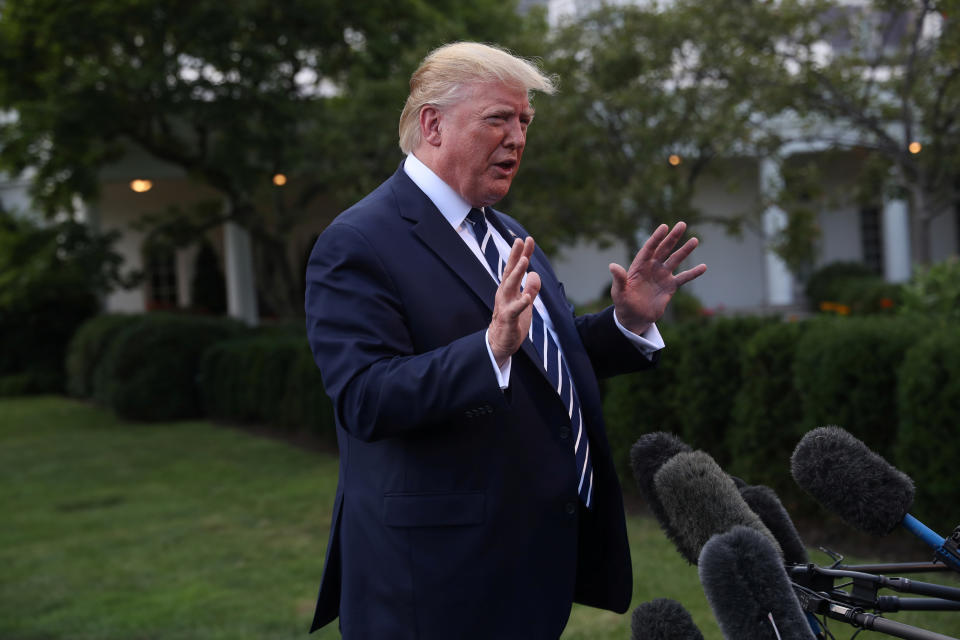Evidence that the stock market can sway presidential votes
Forget the polls. For clues on which political party will win the next presidential election, look no further than the S&P 500 (^GSPC).
The broad stock index has proven to be an accurate predictor of presidential election outcomes over the past several decades.

Put simply, history shows that if the S&P 500 declines in the three months prior to an election, the incumbent presidential party typically loses. On the flip side, gains in the S&P 500 prior to an election tend to secure a win for the incumbent party.
LPL senior market strategist Ryan Detrick examined the data.
“President Trump winning in 2016 caught many off guard, but maybe the weakness in stocks heading into the election was a signal of a new party in power,” Detrick wrote in a note to clients. “History shows that stocks’ performance in the three months before an election could predict which party will win. In fact, stocks have been right for nearly 40 years.”
In 2016, the S&P 500 clocked a 2.3% decline in the three months prior to Nov. 8. Republican Donald Trump won the election, resulting in a loss for Democrat Hillary Clinton, who would have succeeded President Barack Obama, a Democrat.
In 2012, the S&P 500 rose 1.9% in the three months prior to the Nov. 6 election - and incumbent President Barack Obama defeated Republican Mitt Romney.
And in 2008, the S&P 500 declined a staggering 24.8% in the three months prior to the Nov. 4 election, as the financial crisis reached fever pitch, with the demise of Lehman Brothers and the passage of the $700 billion bailout program for the big banks. Then Sen. Barack Obama, a Democrat, defeated the incumbent Republican presidential party and candidate Sen. John McCain.
This pattern can also be seen in the 2004, 2000, 1996, 1992, 1988 and 1984 presidential elections.
When the S&P 500 failed to predict presidential election outcomes
In fact, the most recent example of the S&P 500 failing to elect a president was back in 1980. The index gained 6.9% in the three months prior to the Nov. 4 election and then former Gov. Ronald Reagan, a Republican, defeated the incumbent Democratic party led by President Jimmy Carter.
“The track record isn’t perfect, but in 20 out of the past 23 elections, stocks have been correct,” Detrick added.
Scott Gamm is a reporter at Yahoo Finance. Follow him on Twitter @ScottGamm.
More from Scott:
Morgan Stanley downgrades global stocks, projects ‘poor returns’ over the next year
Gabrielle Rubenstein’s new private equity firm focuses on healthy foods
The earnings picture for 2019 is showing more signs of deterioration
The next rate cut is unlikely to be caused by weak growth, economist explains
What the plunging 10-year Treasury yield says about the economy and stock market
Follow Yahoo Finance on Twitter, Facebook, Instagram, Flipboard, LinkedIn, and reddit.

